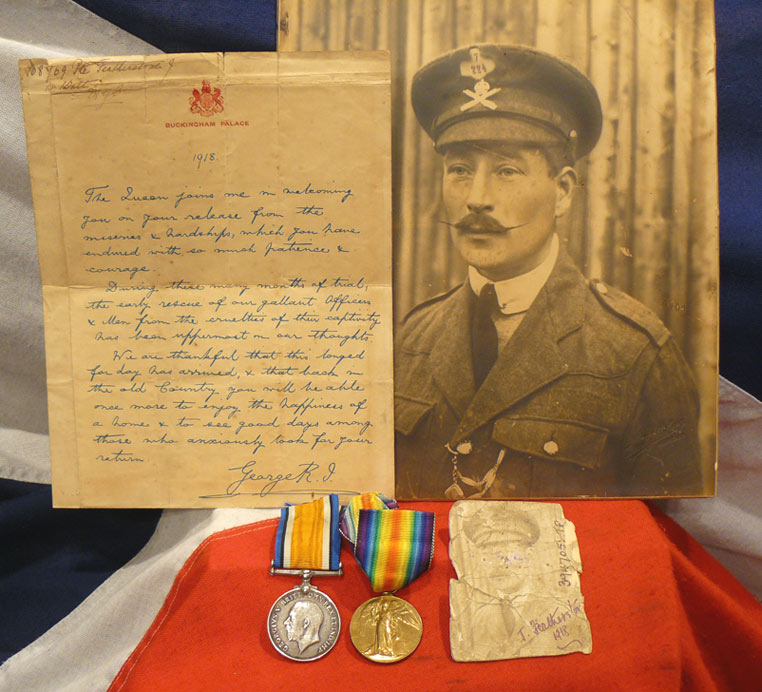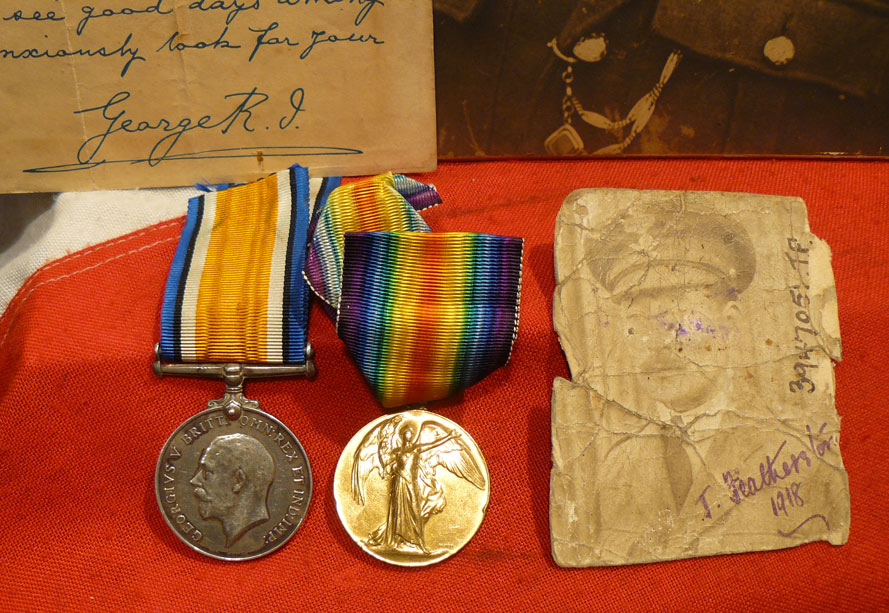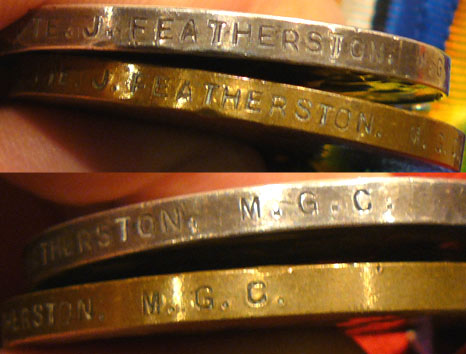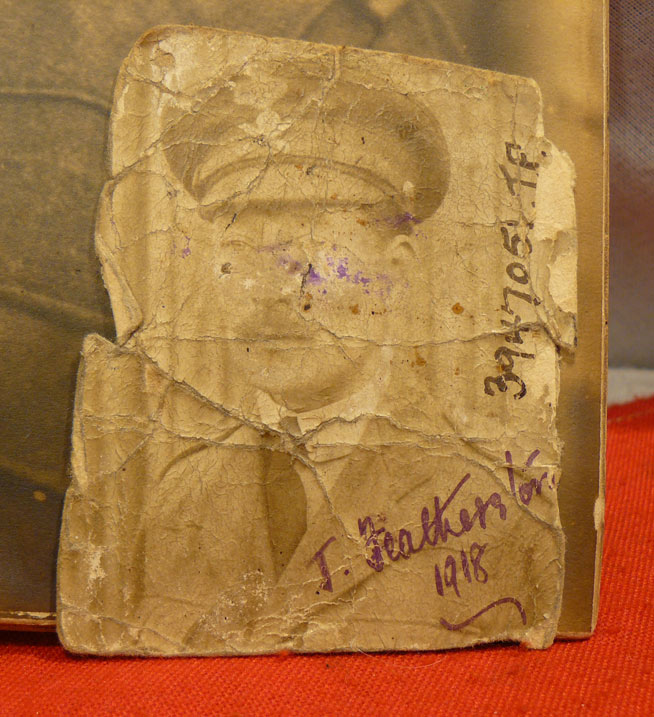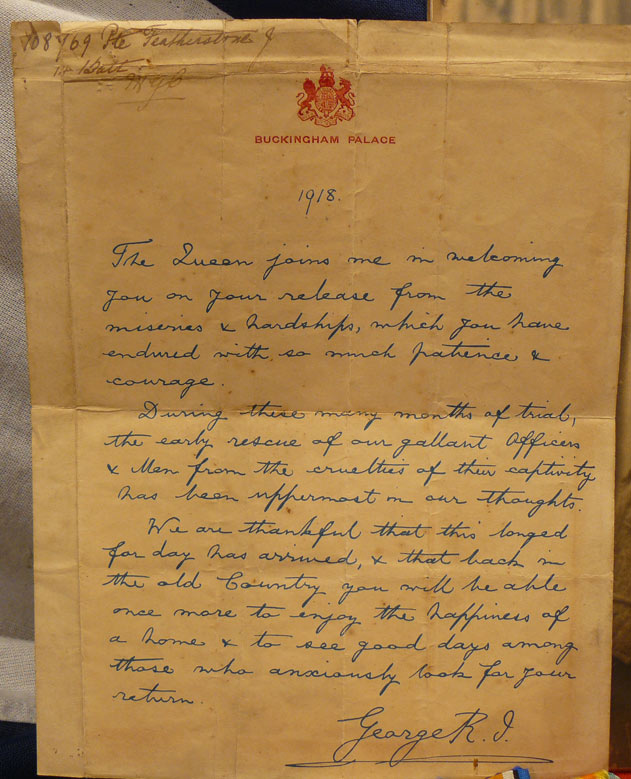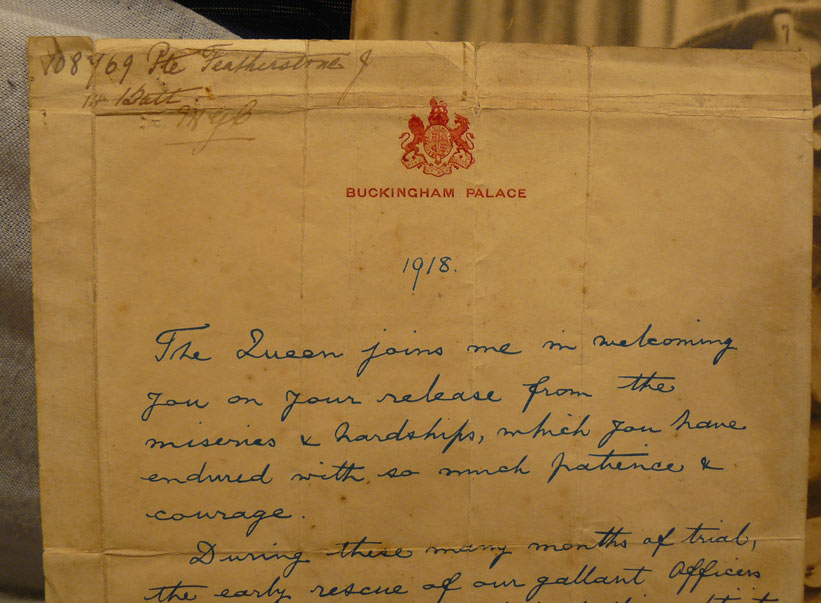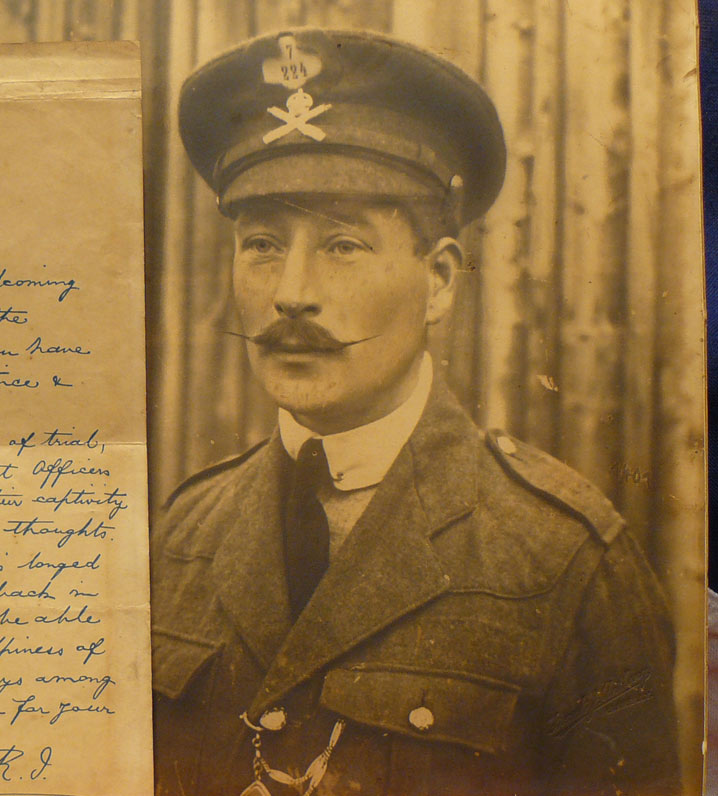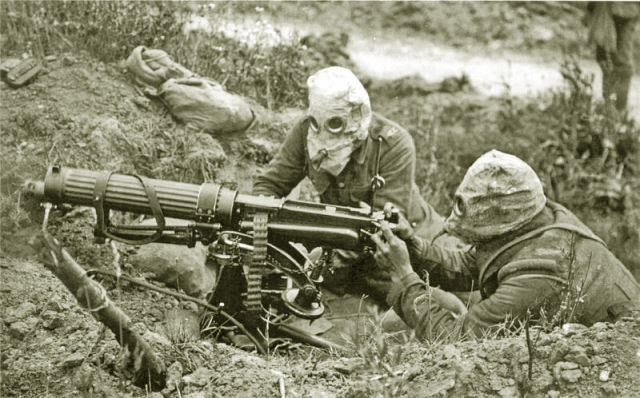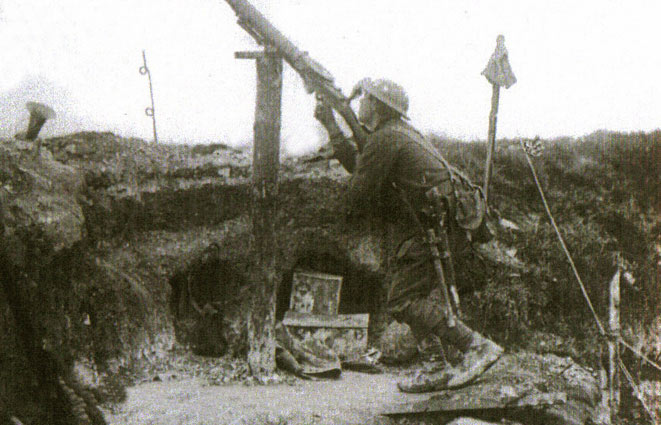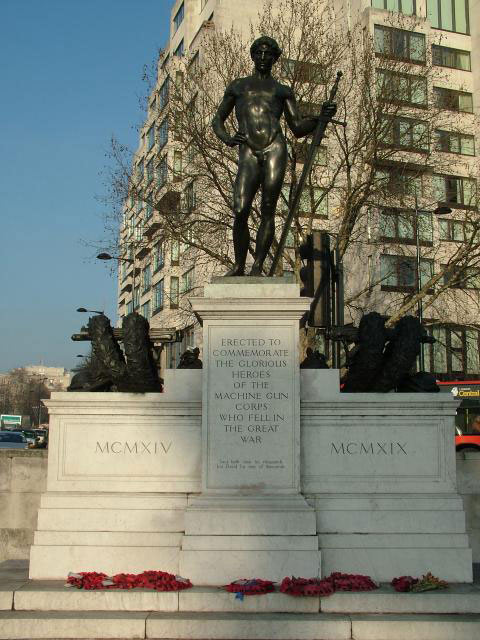Part of a Superb WW1 Machine Gunner's Collection, British and German. A Superb & Fabulous Set of POW Medals, Plus, a Letter From the King & Two Photographs. 1 Signed, of a Machine Gunner of the Most Collectable WW1 British Machine Gun Corps
A British Prisoner of War group. A lovely pair of medals from one of the great services of WW1. Would look spectacular fully framed! With two photos of the recipient and a letter of thanks from King George Vth sent to liberated Prisoners of War. Medals in near mint condition small photo a little worn the original period blow up photo [10 x 12 inches] is very good indeed but with smalll scratches.
On 2 September 1915 a definite proposal was made to the War Office for the formation of a single specialist Machine Gun Company per infantry brigade, by withdrawing the guns and gun teams from the battalions. They would be replaced at battalion level by the light Lewis machine guns and thus the firepower of each brigade would be substantially increased. The Machine Gun Corps was created by Royal Warrant on October 14 followed by an Army Order on 22 October 1915. The companies formed in each brigade would transfer to the new Corps. The MGC would eventually consist of infantry Machine Gun Companies, cavalry Machine Gun Squadrons and Motor Machine Gun Batteries. The pace of reorganisation depended largely on the rate of supply of the Lewis guns but it was completed before the Battle of the Somme in 1916. A Base Depot for the Corps was established at Camiers.There are many instances where a single well-placed and protected machine gun cut great swathes in attacking infantry. Nowhere was this demonstrated with more devastating effect than against the British army's attack on the Somme on 1 July 1916 and against the German attack at Arras on 28 March 1918. It followed that multiple machine guns, with interlocking fields of fire, were an incredibly destructive defensive weapon. The German army developed their Hindenburg Line, to which they withdrew in spring 1917, and relied greatly on machine guns for defence. The British copied this. In addition, both offensively and defensively, the MGC began to fire in co-ordinated barrages. The guns of the 2nd and 47th (London) Divisions fired an indirect barrage over the heads of their advancing infantry, and behind the German trenches (in other words, this was an interdiction barrage, to stop enemy attempts to reinforce or re-supply their front), during the Battle of Loos on 25 September 1915. This was possibly the first time an indirect fire tactic was borrowed from the artillery. Later, and certainly by the Battle of Messines in June 1917, machine gunners were also employing creeping barrages, with fire falling ahead of the artillery barrage to catch enemy troops moving to the rear. They would concentrate fire on specific targets, or sweep the enemy ground behind his front and support positions. Machine guns for these tasks were generally placed about 1000 yards behind the advancing infantry and were moved up as soon as the enemy positions were captured. Machinegun tactics had in fact, become more like those of the artillery than of the infantry. Photo of a Machine Gun crew near the Somme in 1916 wearing gas attack masks, and a Lewis gunner using it in it's anti aircraft capacity, and the London memorial for the Machine Gun Corps. Photos for information only not included. The letter text is as follows;
Buckingham Palace
1918
The Queen joins me in welcoming you on your release from the miseries and hardships, which you have endured with so much patience and courage.
During these many months of trail, the early rescue of our gallant officers and men from the cruelties of their captivity has been uppermost in our thoughts.
We are thankful that this longed for day has arrived, and that back in the old Country, you will be able one more to enjoy the happiness of a home and to see good days among those who ansciously look for your return. [signed] GeorgeRI
Written in blue pen on embossed paper, it is considered the first mass communication from a British monarch after it was reproduced and distributed using lithography. The photos of the soldiers in the trenches and the memorial are not included [for information only].
Code: 22858
395.00 GBP

